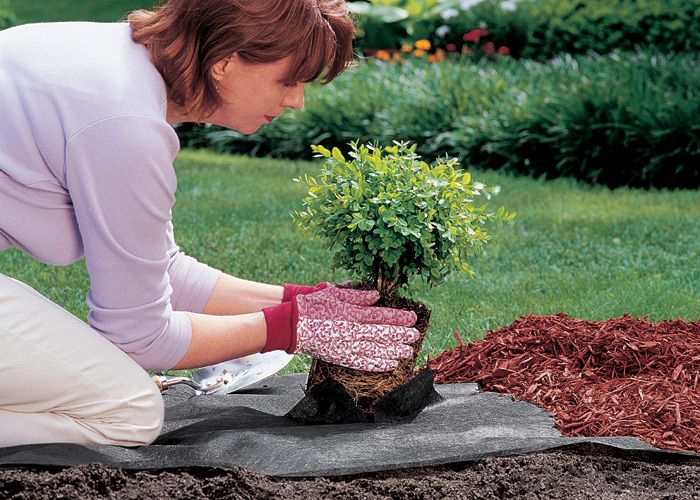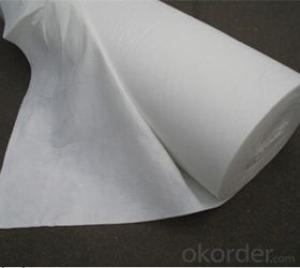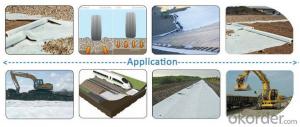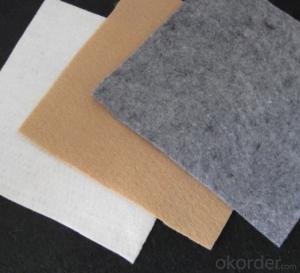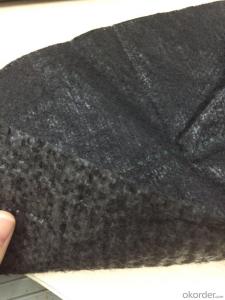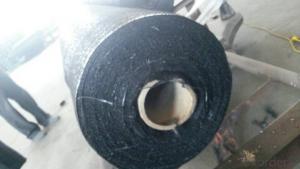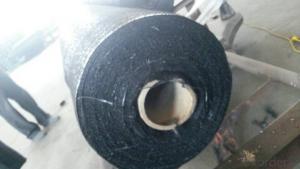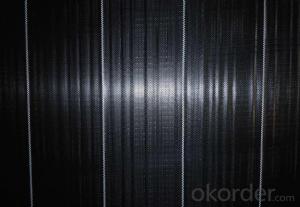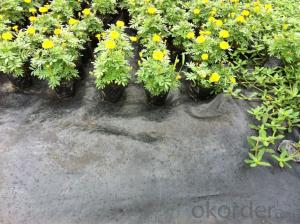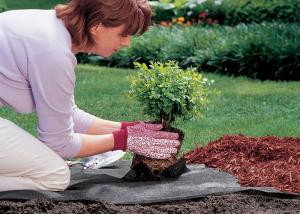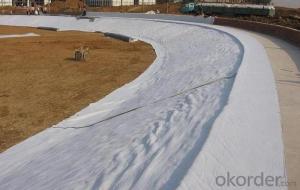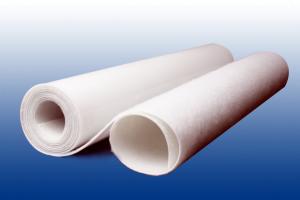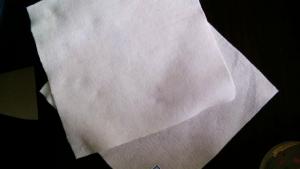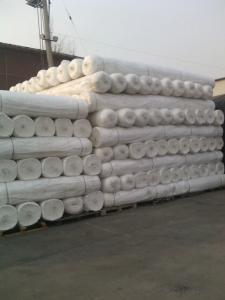Aos Geotextile Silt Fence with Pocket & Wooden Stake/Polypropylene Woven Fabric
- Loading Port:
- China main port
- Payment Terms:
- TT OR LC
- Min Order Qty:
- 5000 roll
- Supply Capability:
- 100000 roll/month
OKorder Service Pledge
OKorder Financial Service
You Might Also Like
1. Woven Fabric Introduction
Polypropylene fabric is made of environmentally friendly raw materials, pp spunbond nonwoven fabric. It used to prevent the growth of weed, without the use of potentially dangerous chemical sprays or labor intensive hoeing. Once installed, weed mat will continue providing protection for years without maintenance.




2. Woven Fabric Feature:
1. Weed suppressant and drainage control landscaping fabric
2. Spun bonded non-woven fabric – will not fray when cut
3. Easy to use
4. Environmentally friendly
5. Allows water, air and nutrients through, suppressing weeds without the use of chemicals
6. Good alternative to Plantex® where cost is a factor
7. UV Stabilised
8. Reduces the level of watering required due to the slower rate of water evaporation
3. Woven Fabric Function:
1. Cover crops in the ground surface,prevent weeds and against the insect
2. Controlling soil humidity and the temperature
3. Does not affect the growth of the crops
4. Protects plants from harmfully solar radiation
5. Air permeability, water permeability help crops growth.
6. Mothproof, eco-friendly, breathable, anti-bacteria, tear-resistant, fusible
4. Woven Fabric Applications:
1. Weed block for landscaped garden beds
2. Permeable liners for planters (stops soil erosion)
3. Weed control under wooden decking
4. Geotextile for separating aggregate / soils under walkway blocks or bricks
5. Assists in preventing paving from settling unevenly
6. Landscape fabric prevents soil erosion
5. FAQ:
Q1: What is your minimum order quantity?
A:The minimum order quantity is 5000 ,but it is negotiable.
Q2:What is your payment terms?
A: T/T,Western Union,Paypal,L/C...
Q3:What is your delivery time?
A:Production time usually costs 2-20 days.
Waiting to cooperate with you!
- Q: How do geotextiles help with sediment control in construction sites?
- Geotextiles help with sediment control in construction sites by acting as a barrier to prevent soil erosion and the migration of sediment. They are placed on the surface of the soil, where they allow water to pass through while trapping sediment particles. This helps to retain the soil in place and prevent it from being washed away by rainwater or other erosive forces. Geotextiles also aid in filtration by capturing suspended particles and allowing clean water to drain through, thus preventing sediment-laden runoff from reaching nearby water bodies.
- Q: Are geotextiles suitable for use in waste containment systems?
- Yes, geotextiles are suitable for use in waste containment systems. They provide effective filtration, separation, and reinforcement properties, helping to prevent the migration of fine particles and contaminants into the surrounding environment. Geotextiles also enhance the stability and durability of waste containment systems, making them an ideal choice for various waste management applications.
- Q: Geotextile and geogrid the same do
- Not the same, this is two kinds of products, my user name professional manufacturer phone! The The
- Q: Can geotextiles be used in the protection of retaining walls?
- Yes, geotextiles can be used in the protection of retaining walls. Geotextiles are often used as a filter or separation layer behind retaining walls to prevent the migration of fine soil particles and provide drainage. They help in distributing the load and reducing the pressure on the wall, increasing its stability and lifespan.
- Q: How do geotextiles contribute to soil drainage?
- Geotextiles contribute to soil drainage by allowing water to pass through them while retaining soil particles. They act as a filter, preventing clogging of the drainage system by soil particles while still facilitating the movement of water.
- Q: Polyester geotextile price how much
- Is there a scientific name? Added: Will not it be filament geotext? This is what we have, but the scientific name does not call you this!
- Q: How do geotextiles aid in the reduction of frost heave?
- Geotextiles aid in the reduction of frost heave by acting as a barrier between the underlying soil and the freezing temperatures. They help to prevent the migration of water into the soil, which is a major factor contributing to frost heave. Additionally, geotextiles can provide reinforcement and stabilization to the soil, reducing its susceptibility to frost heave.
- Q: Can geotextiles be used in wetland restoration projects?
- Yes, geotextiles can be used in wetland restoration projects. They are commonly used as erosion control measures to stabilize soil and prevent sediment runoff, which is crucial for the success of wetland restoration. Geotextiles can also help with water filtration and drainage, improving the overall health and functionality of the wetland ecosystem.
- Q: What are the different factors affecting the durability of geotextiles?
- There are several factors that can affect the durability of geotextiles, including exposure to UV radiation, chemical degradation, physical abrasion, moisture content, and temperature variations. Additionally, the quality and composition of the geotextile material, as well as proper installation and maintenance, can also impact its longevity.
- Q: Geotextile (two cloth a film) to detect the frequency requirements? On behalf of the number?
- Geotextile and geomembrane detection frequency is 100 volumes detection time.
Send your message to us
Aos Geotextile Silt Fence with Pocket & Wooden Stake/Polypropylene Woven Fabric
- Loading Port:
- China main port
- Payment Terms:
- TT OR LC
- Min Order Qty:
- 5000 roll
- Supply Capability:
- 100000 roll/month
OKorder Service Pledge
OKorder Financial Service
Similar products
Hot products
Hot Searches
Related keywords








